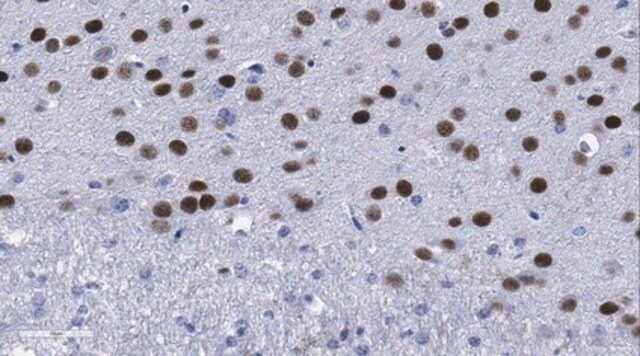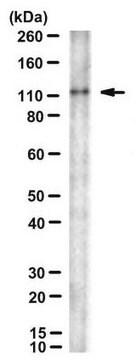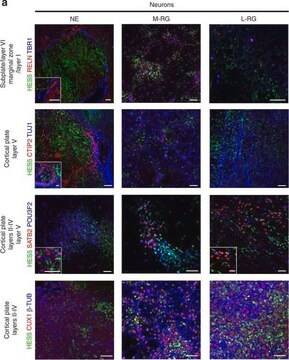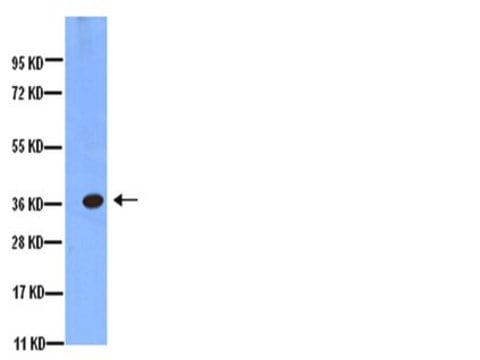MABD51
Anti-Brn-2 (POU3F2) Antibody, clone 8C4.2
clone 8C4.2, from mouse
Synonym(e):
POU domain, class 3, transcription factor 2, Brain-specific homeobox/POU domain protein 2, Brain-2, Brn-2, Nervous system-specific octamer-binding transcription factor N-Oct-3, Octamer-binding protein 7, Oct-7, Octamer-binding transcription factor 7, OTF
About This Item
Empfohlene Produkte
Biologische Quelle
mouse
Qualitätsniveau
Antikörperform
purified immunoglobulin
Antikörper-Produkttyp
primary antibodies
Klon
8C4.2, monoclonal
Speziesreaktivität
rat, human
Methode(n)
immunohistochemistry: suitable (paraffin)
western blot: suitable
Isotyp
IgG1κ
NCBI-Hinterlegungsnummer
UniProt-Hinterlegungsnummer
Versandbedingung
wet ice
Posttranslationale Modifikation Target
unmodified
Angaben zum Gen
human ... POU3F2(5454)
Allgemeine Beschreibung
Immunogen
Anwendung
Qualität
Western Blot Analysis: A 1:2,000 dilution of this antibody detected Brn-2 (POU3F2) in 10 µg of SK-N-MC cell lysates.
Zielbeschreibung
The calculated molecular weight is 47 kDa Brn-2 (POU3F2) may be observed at ~50-55 kDa in some cell lysates (Wolfe, A., et al., (2002). Molecular Endocrinology. 16(3):435-449).
Physikalische Form
Hinweis zur Analyse
SK-N-MC cell lysates
Not finding the right product?
Try our Produkt-Auswahlhilfe.
Lagerklassenschlüssel
12 - Non Combustible Liquids
WGK
WGK 1
Flammpunkt (°F)
Not applicable
Flammpunkt (°C)
Not applicable
Analysenzertifikate (COA)
Suchen Sie nach Analysenzertifikate (COA), indem Sie die Lot-/Chargennummer des Produkts eingeben. Lot- und Chargennummern sind auf dem Produktetikett hinter den Wörtern ‘Lot’ oder ‘Batch’ (Lot oder Charge) zu finden.
Besitzen Sie dieses Produkt bereits?
In der Dokumentenbibliothek finden Sie die Dokumentation zu den Produkten, die Sie kürzlich erworben haben.
Unser Team von Wissenschaftlern verfügt über Erfahrung in allen Forschungsbereichen einschließlich Life Science, Materialwissenschaften, chemischer Synthese, Chromatographie, Analytik und vielen mehr..
Setzen Sie sich mit dem technischen Dienst in Verbindung.








